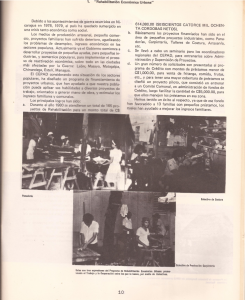CEPAD History – Small Loans
We want to share with you some history of CEPAD programs. Below, you will find an excerpt from CEPAD’s Annual Report of 1980 followed with the English translation. This excerpt focuses on a small business loan program, which is still part of CEPAD’s work, though it has taken on a new form through community loans. You can read about today’s program here and support to impact community incomes.
Due to the events of war in Nicaragua in 1978-1979, the country has stayed submerged in a crisis economically as much as socially.
Artisan production, small businesses, and family projects have suffered greatly, increasing unemployment and income problems in the popular sector. The government has started small development projects to help-in small industries and popular commerce-reactivating the economy, especially in the cities most affected by war: León, Masaya, Matagalpa, Chinandega, Estelí, and Managua.
CEPAD, in consideration of the popular sector, has designed a program to finance urban projects, which has helped the population apply their skills to a variety of work projects, oriented to generate labor to stimulate family and community incomes.
Our principle successes have been:
a. During 1980, there have been a total of 165 projects of rehabilitation at a total cost of C$614,080 (Cordobas).
b. The financed projects have been in small industries: bakeries, carpenter workshops, sewing workshops, handicraft sales, etc.
c. There was a seminar for the regional CEPAD coordinators to train them in administration and supervision of the projects.
d. A great number of solicited projects have been presented to the Credit program for loans of less than C$1,000 (Cordobas) to sell fritanga (traditional food stand), food, fruit, etc. and to have a higher loan ceiling. They have designed a pilot project that consisted of training a community committee in fund administration to later facilitate C$5,000 (Cordobas) to manage funds across the zone.
We’ve had success in respect to this program. These funds have helped 13 families through small loans, increasing these family incomes.
Photos
Top left: Bakery
Top right: A sewing collective
Bottom middle: A carpentry collective
These three examples are projects from the Program of Urban Economic Rehabilitation promoting work and cooperation between those participating through collectives.



